|
The photos were taken by Adam Summers and processed by Ilya Brook. The exhibit is 14 large format prints of photographs on aluminum plate. The fishes depicted here have been specially treated to make the stained skeletal tissues visible through the skin and flesh. The technique uses two vital dyes – Alcian Blue to stain cartilaginous elements a deep blue and Alizarin Red S to turn mineralized tissue crimson. The specimen is then lightly bleached with hydrogen peroxide to remove dark pigments, leaving a snow-white fish. Flesh is dissolved with Trypsin, a digestive enzyme found in your intestine. Trypsin attacks most proteins but does not harm collagen, the principle fibrous material that holds the skeleton and skin together. In order to make the skin and remaining connective tissue invisible the entire specimen is immersed in glycerin. The index of refraction of collagen is very similar to that of glycerin, so the flesh seems to disappear. If you return the specimen to water the collagen will turn white again and the skeleton will be hidden. This technique is only effective on specimens that are less than about 1cm in thickness, and takes much longer for thick specimens than thin. A small fish might take 3 days to process while a larger animal could take several months.
Source: picturingscience.com
0 Comments
Leave a Reply. |
Blog Archive
|
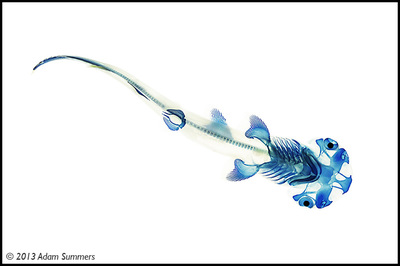


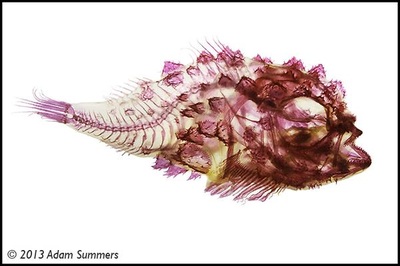
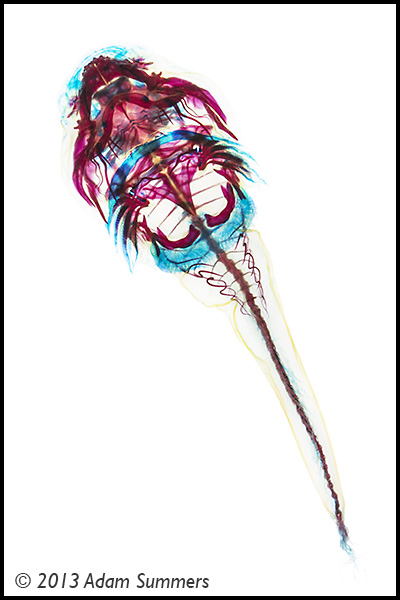

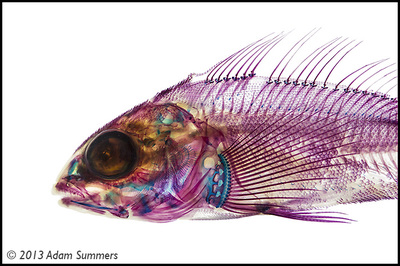
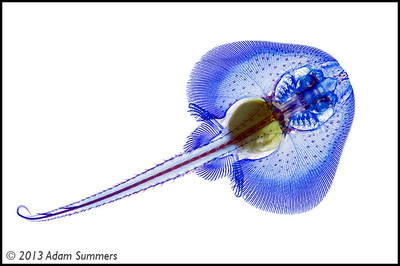
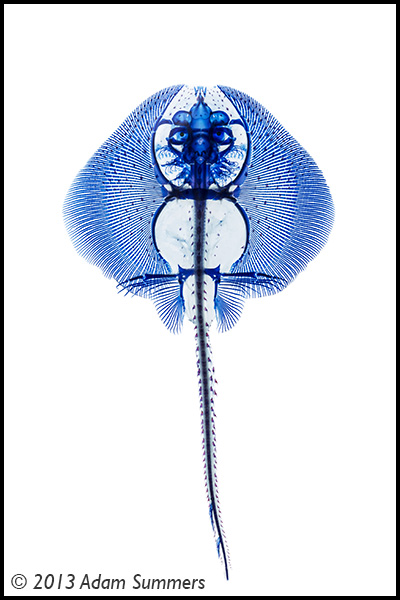


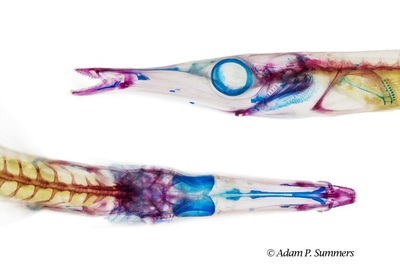
 RSS Feed
RSS Feed
